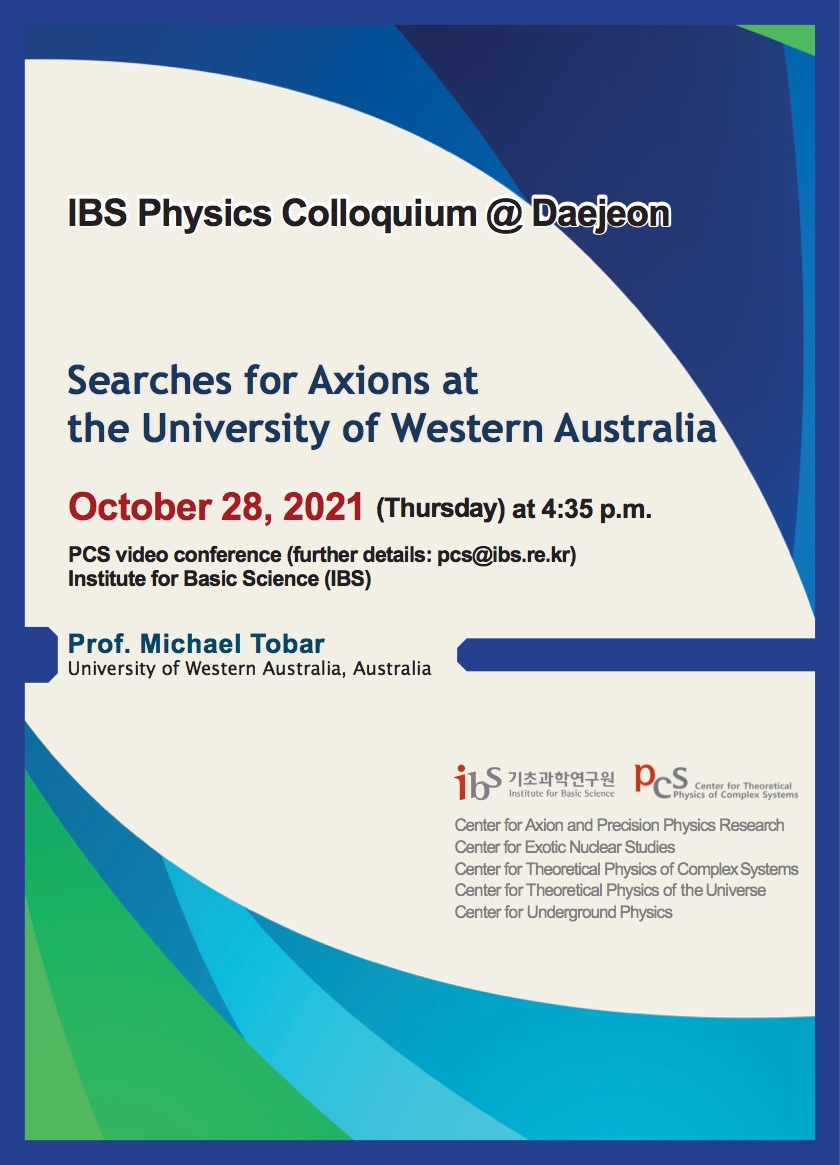Activities

-
searches for axions at the university of western australia
Michael Tobar
University of Western Australia, Australia
28 October 2021 Thu 4.35 pm






IBS Center for Theoretical Physics of Complex Systems (PCS), Administrative Office (B349), Theory Wing, 3rd floor
Expo-ro 55, Yuseong-gu, Daejeon, South Korea, 34126 Tel: +82-42-878-8633
We are undertaking a range of experiments that search for axions over a variety of mass ranges, which will be discussed in this presentation.
1) The ORGAN Experiment is a high mass, (Sikivie-style) axion haloscope. The experiment has began its first phase of operation, and is anticipated to run for 7 years, (2020 - 2026), as funded by the Australian Research Council, continuing the work which has already been done with the ORGAN pathfinding project. The ORGAN axion mass range of interest is 60-200 μeV, corresponding to roughly 15-50 GHz in photon frequency. To overcome the significant technical challenges associated with operating a traditional resonant cavity haloscope, we pursue four avenues of research and development. Firstly, we consider novel resonator designs based on higher order modes in resonant cavities and dielectric materials, to increase form factors and volumes at high frequency. Secondly, we investigate novel schemes for combining multiple resonators, such as cross- correlation, to increase effective detector volume. Thirdly, we consider high critical field superconducting coatings to increase quality factors of resonators. Finally, we propose to implement promising single photon counting technologies, and/or sub-quantum limited linear amplification. The experiment will consist of 2 phases, each broken down into stages. Phase 1 will consist of two targeted scans at 15 - 16 GHz and 26.1 - 27.1 GHz, whereas Phase 2 will consist of the entire 15-50 GHz region, broken down into 5 GHz stages.
2) The UPLOAD experiment is a low-mass AC axion haloscope, which targets axions below 1 μeV (240 MHz). The technique exploits the axion-photon coupling between two photonic resonator-oscillators excited in a single cavity, allowing low-mass axions to be upconverted to microwave frequencies, acting as a source of frequency modulation on the microwave carriers. Already published first results, detailed the use of table-top unstabilised oscillators, and placed axion exclusion limits between 7.44 - 19.38 neV, excluding a minimal coupling strength above 3 ×10^{−3} 1/GeV, and between 74.4 - 74.5 μeV. The second version of the experiment is underway, which for the first time uses
stabilised oscillators, and improve on this limits by more than three orders of magnitude. These results will be presented, along with the comparison to using the same system to detect the power of created photons proposed by others.
3) We will show how Poynting vector analysis can be used to determine the sensitivity of experiments 1) and 2) above. Then we will show how the Minkowski and Abraham Poynting vector controversy can be applied to axion electrodynamics and discuss the consequences.










